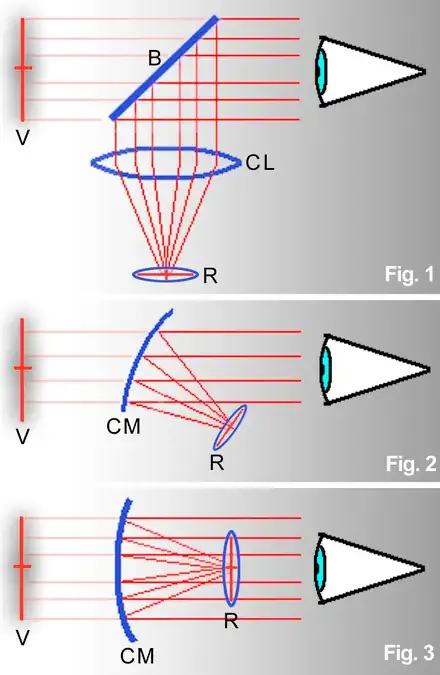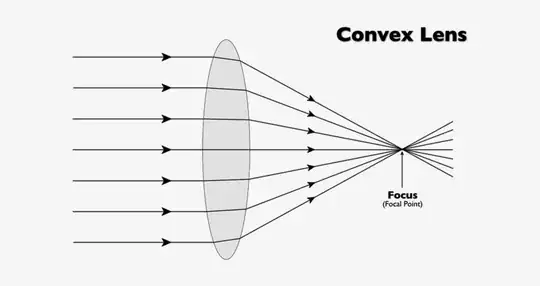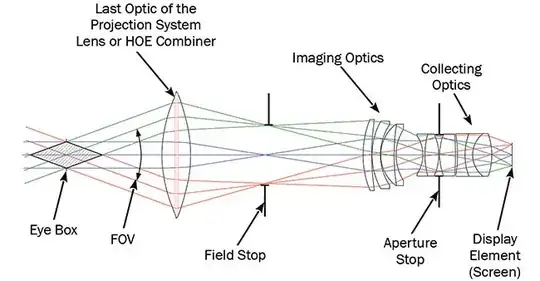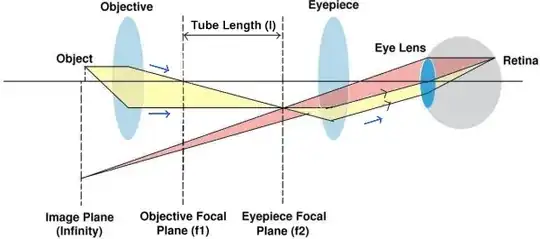For some extended context, this is how Heads Up Displays (HUDs) and Reflector Sights work:
However, as far as a I know, a lens will take collimated light and focus it to a very small point called the focal point. And since the reverse is also true, only the focal point can be collimated and "focused to infinity" to create the virtual image in a HUD.
The reflector sight diagrams clearly show a source reticle that is larger than a focal point, and HUDs in general usually use an LCD display to create the initial image.
Although modern HUDs use several optical elements to correct for aberrations and other distortions, most early HUDs and all reflector sights used a single large convex lens to collimate the image.
Is this merely an issue of lens diameter? Would using a larger lens allow for the focal point to be larger in diameter too which would allow for a small display to be completely collimated?



